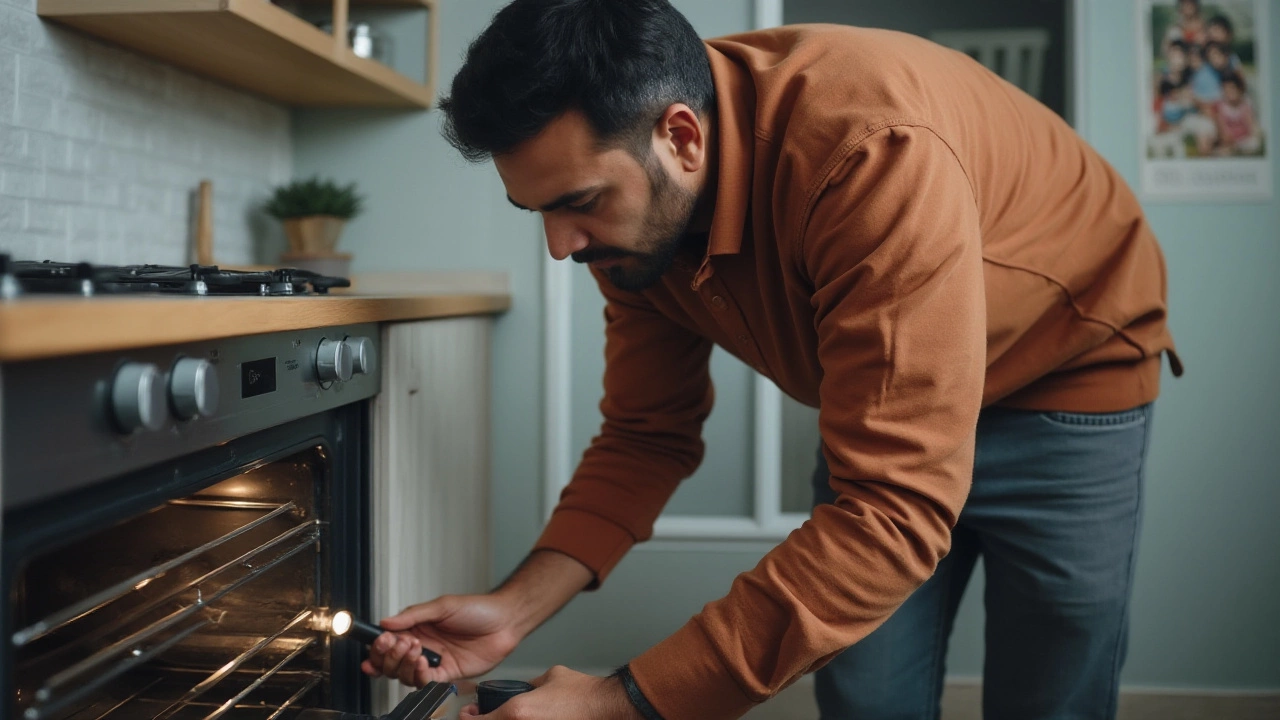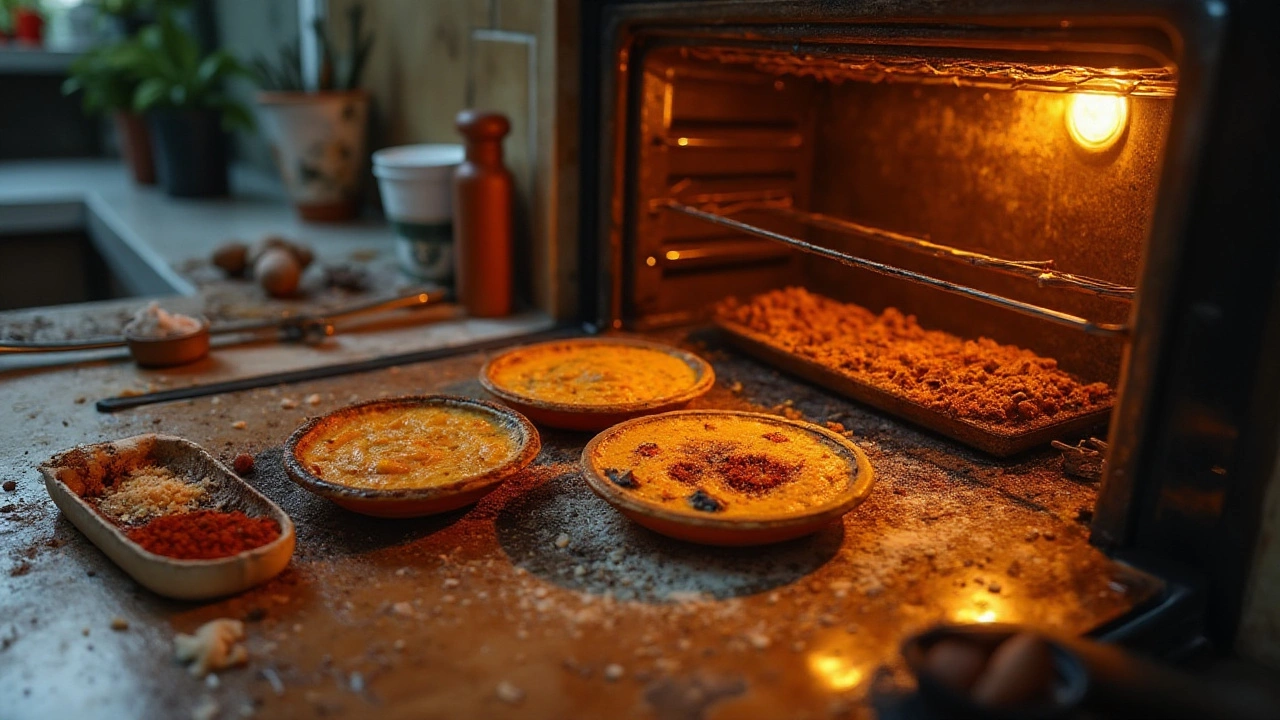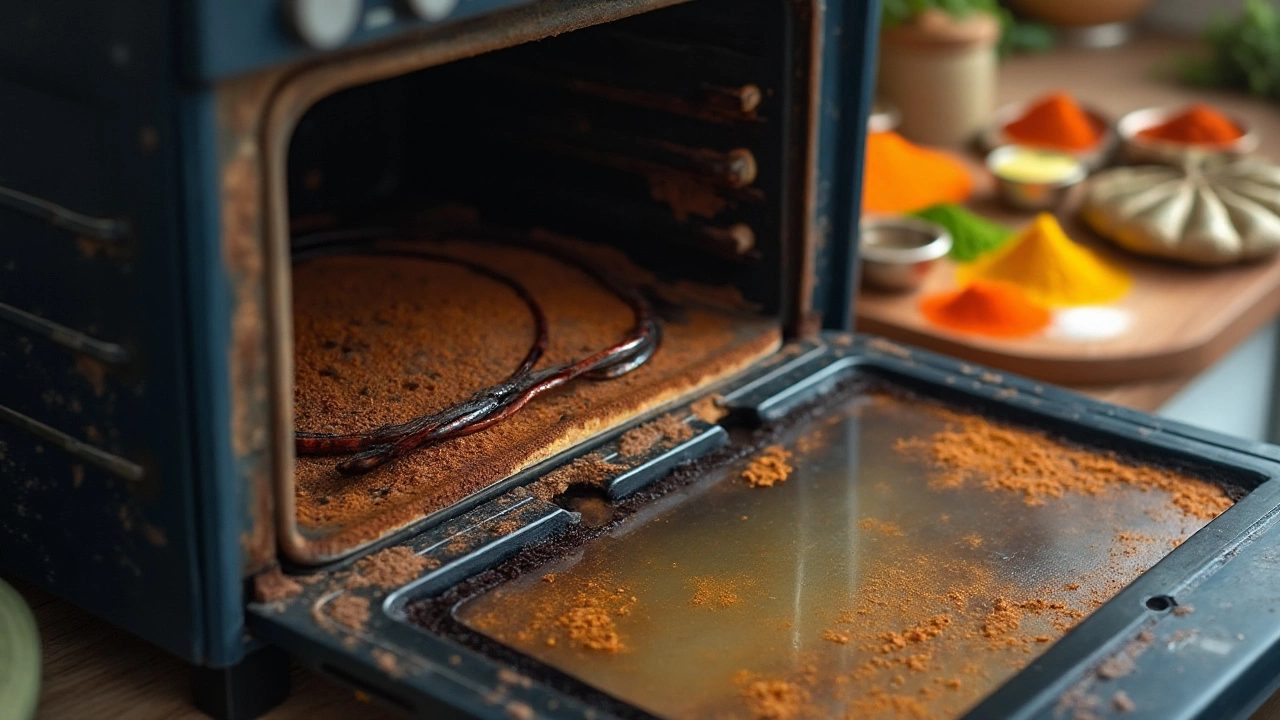Electric ovens are marvels of modern convenience, yet like any appliance, they have parts that can wear out. One such part, often overlooked until it causes trouble, is the oven element. When this component fails, it can throw off all your culinary plans, leaving meals undercooked or your appliance completely cold.
Understanding how to identify a blown oven element can save you both time and the frustration of a malfunctioning kitchen. From peculiar hot and cold spots in your baking to the sight of charred or broken coils, we’ll guide you through the tell-tale signs.
In addition, we'll delve into some common culprits that might cause an element to fail. Armed with this knowledge, you'll be ready to tackle a few do-it-yourself diagnostic tests, while keeping safety at the forefront. And, of course, we’ll also advise on when it might be best to enlist the expertise of a professional.
- Recognizing Signs of a Blown Oven Element
- Common Causes of Oven Element Failure
- Checking and Diagnosing Your Oven Element
- Safety Tips and When to Call a Professional
Recognizing Signs of a Blown Oven Element
Often working silently behind the scenes, the oven element is a crucial component responsible for heating your oven. When it malfunctions, it can disrupt not only your cooking routines but also your peace of mind. But how do you tell if this element is indeed the culprit? There are several clear indicators that your oven element might be blown. One of the initial signs is uneven cooking or failure to reach the desired temperature. This issue often arises because the heating element is incapable of distributing heat evenly within the oven cavity. You might find that your cakes are rising lopsided, the roast is unevenly cooked, or your supposed golden-brown loaves of bread come out splotchy.
A visual inspection can also reveal a lot. Look for any obvious damage to the oven element itself. A blown element may show signs of blistering, deformation, or even breakage. If you spot any of these, it's a sure indication that the element needs replacing. Odd as it might sound, a flashlight can be your best friend here, making it easier to spot tiny fractures or burnt spots on the element. In some cases, the damage might have been caused by excess moisture in the oven or a buildup of food residues, which can lead to overheating and eventual failure of this critical part.
Another telltale sign is the presence of bright spots or sparks when you turn on your appliance. These are indicators of electrical shorts within the element, caused by a break in the electric arc that is supposed to complete a circuit. During such short circuits, you may also notice strange noises, such as popping or hissing sounds, which signal that the element is in quite a dire state. Interestingly, while sparks are a clear sign of malfunction, they are not dangerous fire hazards under normal circumstances, but they do necessitate immediate attention.
"The lifespan of an oven heating element is five years on average," notes appliance expert Carl Anders, "but with proper maintenance and caution from moisture and spills, they can last significantly longer."
Now, a malfunctioning oven element can also trip circuit breakers, particularly if there’s a direct short to the ground. If your oven suddenly stops working and the breakers need resetting, there’s a high probability the element is to blame. Don’t rush to conclusions, though. Always inspect other components like the wiring and control board, which can also trigger similar issues.
If you’re closely inspecting your oven’s performance and see such changes, acknowledging these early signs of failure can prevent further damages not only to the heating element but to other parts of the oven and your electrical system. Awareness is key in addressing these malfunctions early to save you from inconvenient breakdowns and potentially costly repairs. This assessment, and knowing when your oven repair is needed, ensures the longevity of your appliance and keeps your household in culinary harmony.

Common Causes of Oven Element Failure
Electric ovens, with all their sophistication and efficiency, rely heavily on their heating elements to work correctly. When these elements fail, it's often due to a handful of common issues that every appliance owner should be aware of. Not only can recognizing these culprits help in preventive maintenance, but it can also lead you to smarter, timely decisions when repairs are needed. One fundamental cause is simply the age of the appliance. Like any component that undergoes regular thermal expansion and contraction, elements have a finite lifespan. Over time, continuous heating and cooling can lead to the weakening of the element material, thus impairing its functionality and causing it to burn out. Additionally, if an oven is frequently run at high temperatures, this process is accelerated.
Another common problem lies in grease and food particles. When cooking, spills within the oven can cause debris to accumulate on the element. This buildup can act as an insulator, preventing the element from dispersing heat evenly, leading to localized hot spots that eventually cause damage. Regular cleaning is crucial in prolonging the life of your oven element. In some instances, power surges are responsible for sudden failures. These surges can cause voltage spikes that overpower the element’s ability to manage energy, thereby causing a short or complete burnout. If you live in an area prone to frequent voltage variations, you might want to consider installing a surge protector for your appliances.
According to The National Association of Home Builders, "the average life expectancy of an electric oven is about 13 years, but this can vary based on usage and maintenance."
Faulty installation can also play a significant role. If an element isn’t installed correctly or if it becomes loose over time, it may not connect properly within the oven. This poor connectivity can lead to excessive electrical resistance, which in turn causes the element to heat unevenly. Finally, sometimes it’s just a manufacturing defect. While less common, sometimes components are faulty from the start. Checking warranties and understanding your manufacturer's policy can be beneficial if this happens. By remaining vigilant about these potential issues, owners can better maintain their electric ovens and potentially extend the lifespan of this vital kitchen appliance.

Checking and Diagnosing Your Oven Element
Delving into the heart of your electric oven to uncover the mysteries of a faulty element requires a blend of curiosity and caution. This process is not just about identifying malfunctioning components; it’s an exploration into the craftsmanship of your appliance. Begin by ensuring the oven is unplugged—safety must never be compromised. The next step is to methodically assess the element itself. As you open your oven door, let your senses guide you. A blown element may bear visible signs of damage, such as splits, blisters, or even areas that look like they’ve been charred. The aim is to recognize these visual cues that can often be the key indicators of an issue.
Using a multimeter, a versatile tool for diagnosing electronic failures, you'll need to test the continuity of your oven's heating element. Set your multimeter to the lowest ohms of resistance and touch each probe to the element where it connects to the oven. A consistent reading indicates functionality; a zero would suggest a break in the element’s circuitry. Such a gadget is indispensable in the field of DIY appliance repair. It is said that, "The multimeter is the diagnostician's stethoscope," outlined in the Appliance Specialists Journal.
Should you find the continuity test confirms a fault, preparing to replace the element might be your next move. This involves sourcing the correct replacement part—a task requiring precision to ensure compatibility with your oven’s make and model. Web resources often list model numbers along with compatible products, offering a digital lifeline when you’re neck-deep in troubleshooting. As you maneuver through this replacement, remember that patience is key, channeling the meticulous nature of a clockmaker adjusting his gears.
Of course, while checking for a faulty element, do not neglect related components. Sometimes the issue may extend beyond the element alone, involving connections or even the internal wiring. Engaging these latent possibilities can often prevent a recurrence of the problem. Maintaining such foresight is essential in keeping your household electric oven performing optimally. By seeing this project through, not only do you restore an essential part of your home, but you cultivate skills that could prove invaluable.

Safety Tips and When to Call a Professional
Handling a potentially faulty oven demands a sensible approach to safety. Prior to embarking on any oven repair project, always ensure the power supply is disconnected. This crucial step mitigates the risk of electrical shock, which can occur if you inadvertently touch exposed wires or connections. The oven is a complex appliance, incorporating various metal parts that conduct electricity; hence, it's critical to shut off the circuit breaker or unplug the unit entirely.
Basic Safety Measures
Ventilation is a key consideration when diagnosing or repairing an oven. Make sure the area is well-ventilated to avoid inhaling any potential fumes from cleaning agents or burnt components. This is especially important if the oven recently malfunctioned, as burned elements can release unpleasant or harmful odors. Invest in protective gear such as gloves and eyewear to avoid contact with sharp edges or heated parts. A simple slip when reaching into the oven can lead to minor injuries, so focus on maintaining a steady posture and only attempting adjustments with sturdy and reliable tools.
When to Seek Professional Help
There are times when a DIY spirit can only take you so far. After exhausting basic diagnostics and observing no improvement in the oven's performance, it may be time to call in an expert. Professionals have the expertise to deal with more sophisticated electrical issues such as internal wiring problems or control board failures. They can provide insights that might not be apparent to the untrained eye. Moreover, some maintenance work might require specific tools and knowledge that justify the cost of hiring a professional. As tempting as it might be to tackle every appliance glitch independently, remember that safety always comes first.
Additionally, compliance with warranty conditions often necessitates professional repair services. Attempting to fix an oven yourself might void a warranty, leaving you responsible for any subsequent mishaps. To avoid such complications, review your warranty documentation before proceeding with any repairs. The peace of mind a professional repair provides can often outweigh a temporary savings gained from DIY attempts.
According to the Appliance Standards Awareness Project, "Maintenance of electrical appliances by trained technicians not only ensures safety but also enhances the efficiency and longevity of the product." This underscores the importance of professional oversight for complex repairs.
While DIY fixes are feasible for minor issues, understanding when to pass the baton to a professional can save you from further damage or injury—a lesson that’s essential in maintaining a harmonious and safe household environment.



